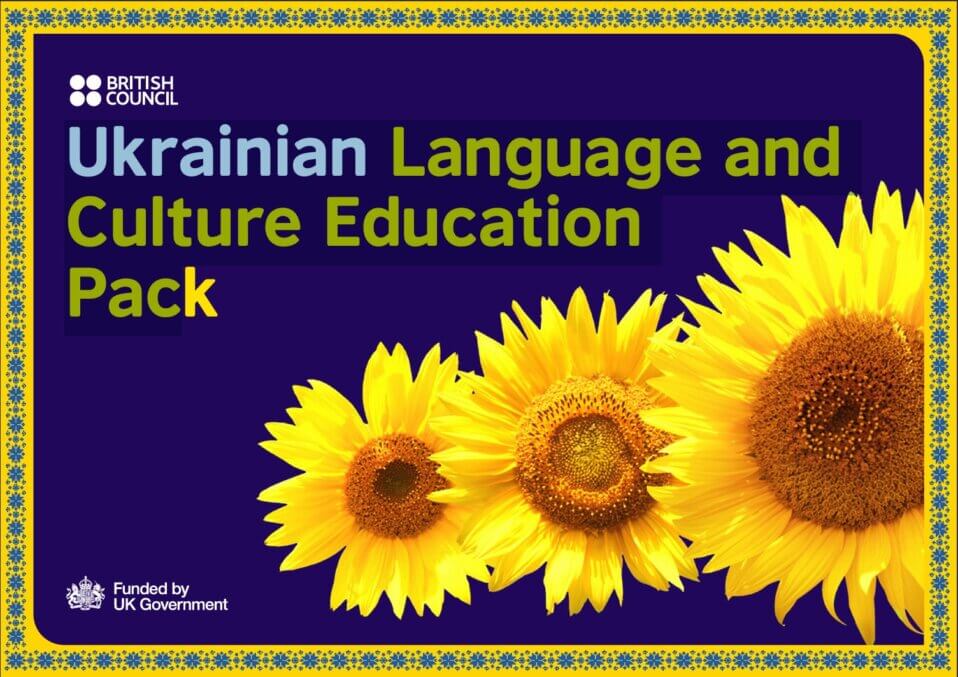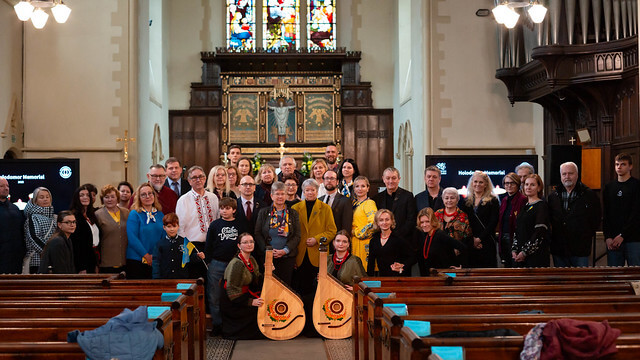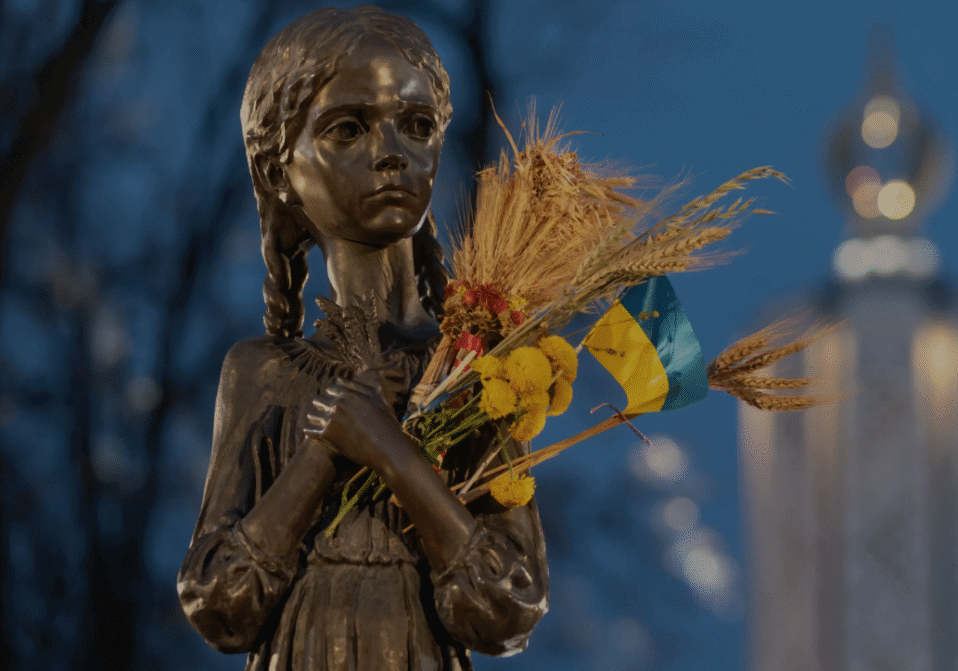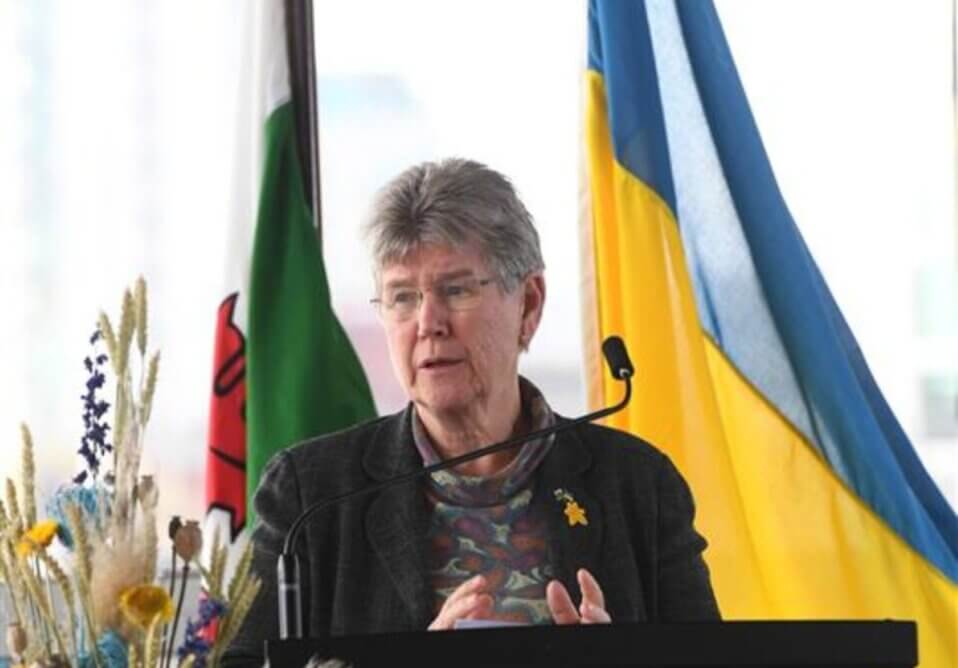It’s always a pure delight to witness people co-creating. The unity, belonging, and friendly rapport that blossoms, along with the sheer satisfaction of the outcome, is captivating. And when these creations are traditional Ukrainian crafts, drawing from ancient, deeply resonant roots and imbued with fresh inspiration, it quite literally gives me goosebumps.
It’s wonderful that there were so many of these unifying circles at the Vyshivanka Day, celebrated in Cardiff Library on 17th of May: Motanki and Guardian dolls, Vytynanky paper cuttings, Petrykivka painting, Straw crafts, Weaving wreaths – all so colorful, bright, symbolic, and seemingly filled with the energies of love. That’s love in action and unity!
With great respect to all the craftswomen, who genuinely share their skills, especially passing these abilities on to the little ones!
Iryna Arkhytko, The Sunny Spirit of Straw Weaving
Straw weaving is one of the oldest folk crafts, and the straw bird, known as the Bird of Happiness, is a traditional Slavic amulet symbolizing joy, harmony, prosperity, and protection for the home.
In Ukraine, Iryna worked as a kindergarten teacher. Her experience showed that children engaged in folk crafts and games gain more than just knowledge; they develop a strong sense of identity and belonging to their heritage, understanding the value of their nation and its legacy. Often, even complex folk crafts come naturally to them.
“For me, straw embodies the energy of the sun,” notes the craftswoman. “I wanted the workshop participants to feel this solar energy that connects generations, filling them with warmth and sincerity. I believe I succeeded. I am truly grateful to all the participants for their smiles and inspiration, and to my host, Sheila Smith, and her family for the creative atmosphere in their home, which inspires me to create and share my work.”
Iryna Arkhytko’s straw art works were also beautifully displayed alongside pieces by other artisans.
Drawing on her experience working with children, and with the support of Victoria Kizim’s rhythmic gymnastics group, Iryna led a traditional Ukrainian game called “Podolianochka.” Guests eagerly joined the lively circle dance, and the game brought many smiles and a strong sense of unity to all who participated.
Iryna with her host Sheila Smith at the workshop:
Olena Ponomarenko: A Tapestry of Tradition in Every Doll
Olena Ponomarenko is a graduate of Kryvyi Rih Pedagogical University and a visual arts teacher who has dedicated the past fifteen years to Ukrainian folk decorative art.
Her primary creative focus is the crafting of traditional Ukrainian folk dolls. Each doll created by Olena tells its own story and carries a piece of her soul. They reflect her emotions, experiences, and moments from her life. Her work forms a gentle connection between generations, preserving tradition through sincere, heartfelt craftsmanship.
The exhibition featured Olena’s handcrafted dolls — delicate, lifelike figures dressed in stylized traditional costumes from various regions of Ukraine. Each doll seemed to carry a piece of its homeland’s history and soul. The intricate handmade details, lovingly embroidered patterns on shirts and aprons, and the rich colors of the headdresses reflected the full spectrum of Ukrainian cultural identity — from the restrained simplicity of Volyn to the lavish elegance of Poltava. These dolls were more than just pleasing to the eye — they told a silent yet heartfelt story of heritage, tradition, and deep love for the native land.

(Workshop photo by Zoya Kostina).
Olha Cherniavska: Igniting Joy with Motanka Dolls
Olha Cherniavska, a true “spark plug” and energizer, led a captivating workshop on Motanka dolls. Olha is often a driving force behind various initiatives aimed at developing the Ukrainian community. She volunteers tirelessly for the Ukrainian Hub in Cardiff and organizes engaging activities for residents in Llantwit Major, where many Ukrainian families have settled.
With her lively personality and love for learning new things, Olha values genuine positive emotions above all else. She finds inspiration in travel, new experiences, and the opportunity to share valuable insights with others. “My favorite hobby is creating happy moments for others, bringing positivity into their lives,” Olha explains. “Every emotional burst is a gift and my ‘happiness workshop,’ where I’m always ready to share joy and smiles.”
It’s no surprise that Olha’s workshop drew a considerable audience, with each participant leaving with their own handcrafted Motanka doll, imbued with unique vision and symbolism.
The Power of the Motanka
Describing her workshop, Olha shares, “The Motanka is a traditional Ukrainian amulet, crafted entirely by hand without using a needle. It’s more than just a decoration; it’s a powerful symbol of family well-being, protection, and spiritual unity. Each Motanka embodies the warmth of the maker’s hands, the harmony of colors, and a sacred connection to our ancestors. I create my Motankas using threads and vibrant, symbolic colors, making every doll unique and special.”
“For me, these aren’t just decorative items; they are unique symbols that remind us of the richness of our culture, our connection to our homeland, and the importance of family values. My goal is to preserve and pass on Ukrainian heritage to future generations through Motanka dolls. Every doll is created with love and carries its own symbolic meaning.”
Valeriia Kolodyazhna: Petrykivka Art Therapy and Connection to Ukrainian Roots
Valeriia was born and lived in the Ukrainian city of Kharkov before the War. With the war started she moved with her husband and five children to a cosy little town in Wales – Tredegar. Valeriia continues to work online at the Kharkiv Waldorf School as a teacher, and also worked as a teaching assistant at Hereford Stainer School.
With Petrykivka painting master got acquainted at a young age, and since then this kind of creativity does not let her go. Incredible patterns, bright juicy colours, magical flowers and birds – it all seems to connect Valeriia to her Roots, to the Soul of her ancestors. While painting she feels getting to another world. For her Petrykivka is an art therapy and a way to express herself, the mood and feelings.
Valeriia learnt Petrykivka from different masters and on special courses, then she began to deliver this knowledge to children and adults thgough lessons and workshops. Petrykivka is an opportunity to rest her soul and be filled with the healing power of creativity, presrving Ukrainian traditions and authenticity.
Petrykivka: Ukraine’s Vibrant Folk Art
As Valeriia explains, Petrykivka is a traditional Ukrainian decorative painting style. Originating from the village of Petrykivka in Ukraine’s Dnipropetrovsk region, it historically adorned house walls and everyday household items.
The earliest examples date back to the 18th century, yet it continues to thrive and evolve as a modern art form, standing out as one of Ukraine’s most vibrant ornamental folk arts. In 2012, Ukraine’s Ministry of Culture recognized it as intangible cultural heritage, and it was later added to the UNESCO Representative List of the Intangible Cultural Heritage of Humanity. Today, Petrykivka painting is a true “brand” in Ukrainian popular culture.
From Murals to Masterpieces
Petrykivka painting is believed to have originated from village house murals. These painted wall decorations were common across Ukraine, with each region boasting unique styles. Traditionally, paintings were refreshed once or twice yearly. Beyond murals, wooden household items, especially wedding chests, were also decorated. The tradition of “mal’ovky” later emerged, allowing pre-painted paper designs to decorate homes without the artist needing to visit in person.
Nature’s Palette and Unique Tools
Plant forms, particularly flowers, dominate Petrykivka painting. These can be abstract or based on common garden flowers like dahlias and roses, wildflowers such as chamomile, or other plants like viburnum berries and grapes. Acanthus leaves (often called “ferns”) and flower buds are also common. Designs frequently combine plant imagery with birds, and sometimes with whimsical depictions of animals and people, often featuring the mythical phoenix or firebird.
Historically, Petrykivka was painted exclusively on white backgrounds. However, contemporary artists now use a variety of colors, including black, blue, green, and red. Pigments were traditionally extracted from herbs, leaves, berries, and flowers using specific methods: cherry juice for red, grasses for green, and snowdrop flowers for blue. Yellows came from sunflower petals and onion skins. These pigments were thinned with egg yolk or milk and fixed with cherry sap or beet sugar. Synthetic dyes, gouache, and watercolor appeared much later.
The painting tools themselves were also natural: fingerprints, brushes made from tree shoots and marsh grass stems, and the iconic homemade brush crafted from cat hair.
Olha Petrovska: Cutting Out Culture with Vytynanka
Olha Petrovska, a software engineering lecturer at Swansea University, dedicates her free time to painting and applied arts. The idea for a Vytynanka workshop struck her when she learned about Vyshyvanka Day celebrations. Inspired by traditional symmetric Vytynanka designs and the work of masters like Marianna Liubas, Taras Kramarenko, and Dariia Alioshkina, she organized the workshop to offer attendees a chance to connect with a living Ukrainian tradition.
This intricate art form reflects unique aspects of the Ukrainian mentality: patience, attention to detail, and a love for beauty and harmony. Each cut pattern tells a story of the Ukrainian people, conveying symbolism shaped over centuries. In an era of globalization, it’s especially vital to support crafts that are central to our national identity. For Ukrainians living abroad, a Vytynanka workshop is a way to recall school art lessons, maintain a connection with their native culture, and pass it on to their children.
Nikola Boyko also led a wreath-weaving workshop, which was full of natural beauty and particularly appealing to girls. We hope to share more about this amazing woman with huge warm heart, who definitely has Ukrainian roots, as she contributed to Vyshyvanka Day in several different ways.
The event was organized by Yuliia Bond and the Welsh Refugee Council, with support from Cardiff Library and the National Lottery Heritage Fund.
























































